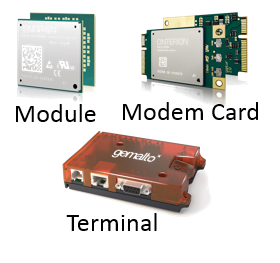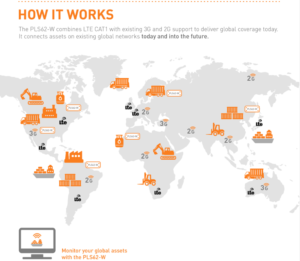
The IoT is revolutionizing industries and connecting societies like never before. However, as the IoT continues to develop, the issue of connectivity has become more complicated, especially when deploying new technologies over a large geographical area or population. In the past, mobile connectivity revolved solely around 2G and 3G, using frequencies that only used four bands to provide internet coverage. Now with the evolution into 4G, there are over 30 wireless bands, creating a variety of challenges for businesses across the globe.
We asked a group of IoT industry leaders and experts from within Gemalto to better explain how the problem currently affects businesses and what can be done to solve it. We’ve given a brief overview of their views below, but for a more comprehensive assessment we recommend downloading our new report: Delivering IoT Connectivity in an evolving landscape.
What is the problem now?
The main problem with the explosion of wireless bands is that each region, country and community use different technologies and variations of bands to support the millions of growing connections emerging in the consumer and industrial landscapes. This makes getting devices that are positioned in these different areas and markets to communicate with each other a difficult task. It also makes manufacturing devices in different countries highly problematic, as a product being created in China for use in the US will be unable to access the bands it needs to test that the product works and will therefore have to attempt to simulate this in labs.
What about the networks of the future? Can they not solve this problem?
There has been a lot of excitement surrounding the launch of next generation Low Power Wide Area (LPWA) networks such as LTE-M and NB-IoT, as these will be the first global cellular networks to be exclusively used by machines, helping those who operate their devices globally to track their assets. However, the earliest we can expect the roll out of these networks is at some point in 2020 and even then, the networks will need tests and updates to become stable and reliable for customers. We also predict this to take longer for these networks to function as they should because they were specifically designed for IoT and therefore cannot be fine-tuned in consumer products we have currently.
What can be done now?
Until recently, the only way to ensure all your devices across the world stayed connected was for developers to design and deliver many different product variants, or SKUs, for large fleets of connected devices. Nevertheless, the logistics and expense of developing and managing multiple SKUs is still often too costly to make it worthwhile for businesses.
However, unlike others, we’ve managed to tackle the challenge of global IoT connectivity by creating the PLS62-W. The PLS62-W combines LTE-CAT1 with the existing 2G and 3G networks to deliver global coverage, meaning our customers can now connect all their global assets with all the variations of existing networks – all with one single IoT module. This lowers costs for consumers as their devices will not carry the costs associated with a device going off the grid and incurring extensive costs for unplanned service efforts.

Why is the PLS62-W so effective?
With this unique product, developers can design one product SKU offering IoT connectivity anywhere in the world – even for mobile products that travel the globe. And they can do it now, without waiting for networks to evolve. The PLS62-W wireless module can also be configured for any IoT device including hardware that is currently operating and is available is three forms; Embedded Module, Modem card and Terminal.
How might this work in practice?
To give you a rough idea how this might work for your business, we have seen the product work successfully in shipping, to track containers effortlessly, and with global agriculture firms, to optimise their crop development.

For more information, and to find out how else the PLS62-W might change the way you do business download our latest report, designed to give you the edge on understanding the future of global IoT connectivity.


